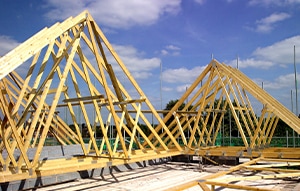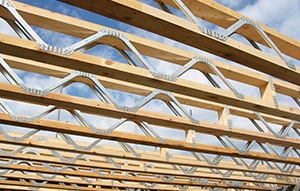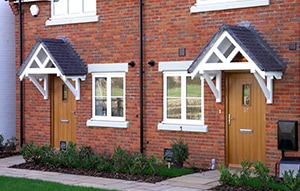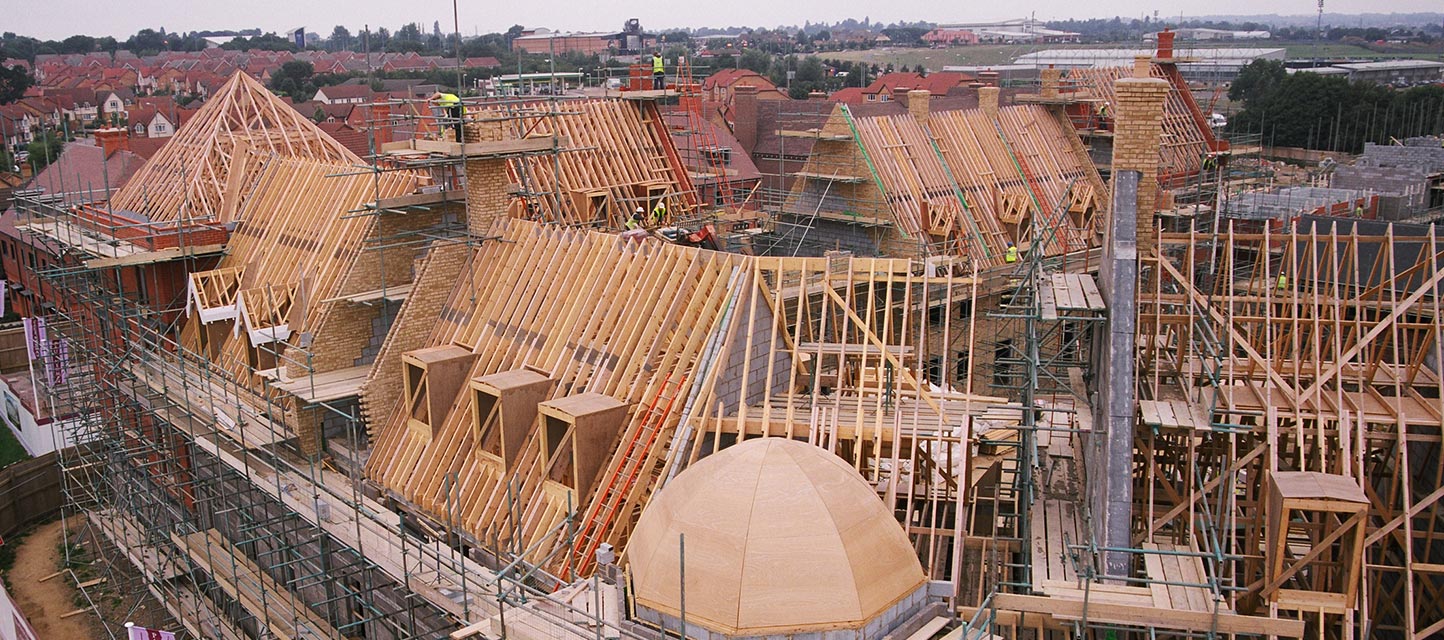Charting the Sustainable Future: An Interview on PEFC’s Role and the Prospects of Certified Timber in the UK
In this insightful interview, we delve into the perspectives of Alun Watkins, the executive director of the Programme for the Endorsement of Forest Certification (PEFC), as he shares his thoughts on the future of timber products in the United Kingdom. As the custodian of sustainable forest management standards, PEFC plays a vital role in promoting ethical practices and ensuring the ecological, social, and ethical integrity of timber and non-timber forest products. In this discussion, Watkins provides valuable insights into how PEFC supports UK housebuilders in meeting their Environmental, Social, and Governance (ESG) targets, its impact on Sustainable Development Goals (SDGs), and the evolving landscape of the UK timber industry. Join us as we explore the challenges, achievements, and promising future of certified timber in the UK through the eyes of Alun Watkins.
How does the former PEFC executive director see the future of timber products in the UK?
Interview attendees:
- James Scott: Managing Director of Scotts Timber Engineering
- Alun Watkins: Executive Director of the PEFC
Interview: Discussing PEFC and the future of Timber with Alun Watkins
Certification for timber supplies is a major concern for many UK housebuilders. James Scott recently spoke to Alun Watkins, executive director of the Programme for the Endorsement of Forest Certification (PEFC),. During the interview, Alun explained how the PEFC helps UK housebuilders meet their ESG targets and how the UK compares with other countries regarding understanding PEFC certified timber products.
The Programme for the Endorsement of Forest Certification (PEFC) is an international non-profit, non-governmental organisation dedicated to promoting Sustainable Forest Management (SFM) through independent third-party certification.
PEFC works throughout the entire forest supply chain to promote good practices in the forest and to ensure that timber and non-timber forest products are produced with respect for the highest ecological, social and ethical standards. Thanks to its eco-label, customers and consumers can identify products from sustainably managed forests.
How does the PEFC help UK housebuilders meet their ESG targets, including meeting the UN’s sustainable development goals?
The environmental aspect is important to the PEFC, as we require that all timber and wood-based products are brought from sustainable sources, but the PEFC certification goes beyond that. With regards to the Modern Slavery Act as an example, in both forest management and the chain of custody standards, we don’t allow for forced labour or child labour and we also promote gender equality.
The impact of PEFC certification on Sustainable Development Goals (SDGs) is significant. By promoting the purchase and utilisation of sustainable timber, PEFC actively supports the achievement of multiple SDGs.
One of the most effective ways to combat climate change is by increasing tree plantation and adopting sustainable forestry practices. PEFC recognises the role of biodiversity and sustainably managed forests in achieving this goal; therefore, I believe it has a big impact on ESG and SDGs.
How well do UK housebuilders understand PEFC?
PEFC has been other countries’ standard forest certification system for some time. In countries like Finland, Germany, Austria and France, PEFC is the dominant certification scheme. People in these countries are more aware of forestry practices and have used timber in building and construction far more than we have. But things are changing for the better in the UK.
More housebuilders are switching to timber frames than ever, which is good news. But, we still need to educate the sector more about sustainable forest management and how timber can be used.
Architects and specifiers must be aware of PEFC and sustainable forest management. For instance, We are getting used to the benefits of using timber as far as storing carbon for 60, 70, 80 years or more, which is brilliant. Timber also has better insulation properties and is a low-carbon industry.
Is the PEFC supported by the UK government or any other institutions?
It is important that the industry is heard. In the UK, we have bodies such as Confor (Confederation of Forest Industries) and TDUK (Timber Development UK), which do much lobbying to ensure that appropriate steps are taken, such as planting more trees and planting the right types of trees in the right places. If the government wants to get things right, they must take action, and a policy is just a part of that.
What do you see as the future of the timber industry in the UK?
I am very optimistic about the future and using certified timber in the UK. I can only see it going one way.
Timber is increasingly used in engineered products, especially in cross-laminated timber. We see mass timber buildings being constructed, and we see more modular and offsite construction in the housing industry utilising timber. Even in my time at PEFC, I’ve seen this grow substantially over the past 13 years.
We must ensure we meet the demand for these new timber products. We need new timber, and we need to plant more trees. And as long as we can plant more trees, we can continue to use this fantastic material going into the future.
The saying goes, “The best time to plant a tree was thirty to forty years ago. The second-best time to plant a tree is now.”
Key takeaways
— PEFC actively promotes Sustainable Forest Management (SFM) through third-party certification.
— The certification ensures that timber and wood-based products adhere to ethical standards, including the prohibition of forced labour, child labour, and the promotion of gender equality.
— PEFC significantly contributes to the achievement of multiple Sustainable Development Goals (SDGs) by encouraging the purchase and utilisation of sustainable timber.
— While PEFC has been a long-standing certification system in countries like Finland, Germany, Austria, and France, awareness is growing among UK housebuilders.
— More UK housebuilders are adopting timber frames, reflecting a positive trend, but there is a need for further education on sustainable forest management practices.
— Architects and specifiers play a crucial role in promoting awareness of PEFC and sustainable forest management practices.
— Industry bodies such as Confor and Timber Development UK (TDUK) lobby for appropriate steps, emphasising the importance of government action and policies to ensure sustainability.
— The future of the timber industry in the UK appears optimistic, with a rising trend in using certified timber in engineered products, mass timber buildings, and modular construction.
— Meeting the demand for new timber products necessitates planting more trees, underlining the importance of proactive environmental stewardship.
— The interview emphasises the timeless wisdom that the best time to plant a tree was decades ago, but the second-best time is now, underscoring the urgency of sustainable practices.
Summing up
In conclusion, the interview with Alun Watkins, the executive director of PEFC, sheds light on the pivotal role the Programme for the Endorsement of Forest Certification plays in shaping the future of the timber industry in the UK. As a driving force behind Sustainable Forest Management, PEFC’s commitment to ethical standards, environmental responsibility, and its contribution to Sustainable Development Goals positions it as a crucial player in the industry.
While acknowledging the growing awareness and adoption of timber in construction among UK housebuilders, Watkins highlights the need for continued education on sustainable forest management practices. The interview underscores the evolving landscape of the UK timber industry, drawing parallels with countries where PEFC has long been established as the dominant certification scheme.
The support from industry bodies and the call for government action to ensure responsible policies reflect a collaborative effort to steer the timber industry towards a more sustainable future. Alun Watkins’ optimism about the increasing use of certified timber in engineered products, coupled with the rise of mass timber buildings and offsite construction, paints a positive picture for the industry’s trajectory.
As the article concludes, the overarching message is one of hope and responsibility. The industry’s future prosperity is intricately tied to the proactive planting of trees today, echoing the timeless adage that the best time to plant a tree was decades ago, but the second-best time is now. The interview invites stakeholders, from builders to policymakers, to join hands in nurturing a future where certified timber not only meets demand but also contributes to a greener, more sustainable world.
To watch the full interview, visit Scott’s Timber Engineering’s Youtube page
Learn more about our PEFC journey here.
If you would like to speak to one of our team, simply fill out your details below and a member of our sales team will be in touch very soon to discuss your project requirements.
If you would like to speak to one of our team, simply fill out your details below and a member of our sales team will be in touch very soon to discuss your project requirements.
- Copyright © Scotts of Timber 2024
- Privacy Policy




















